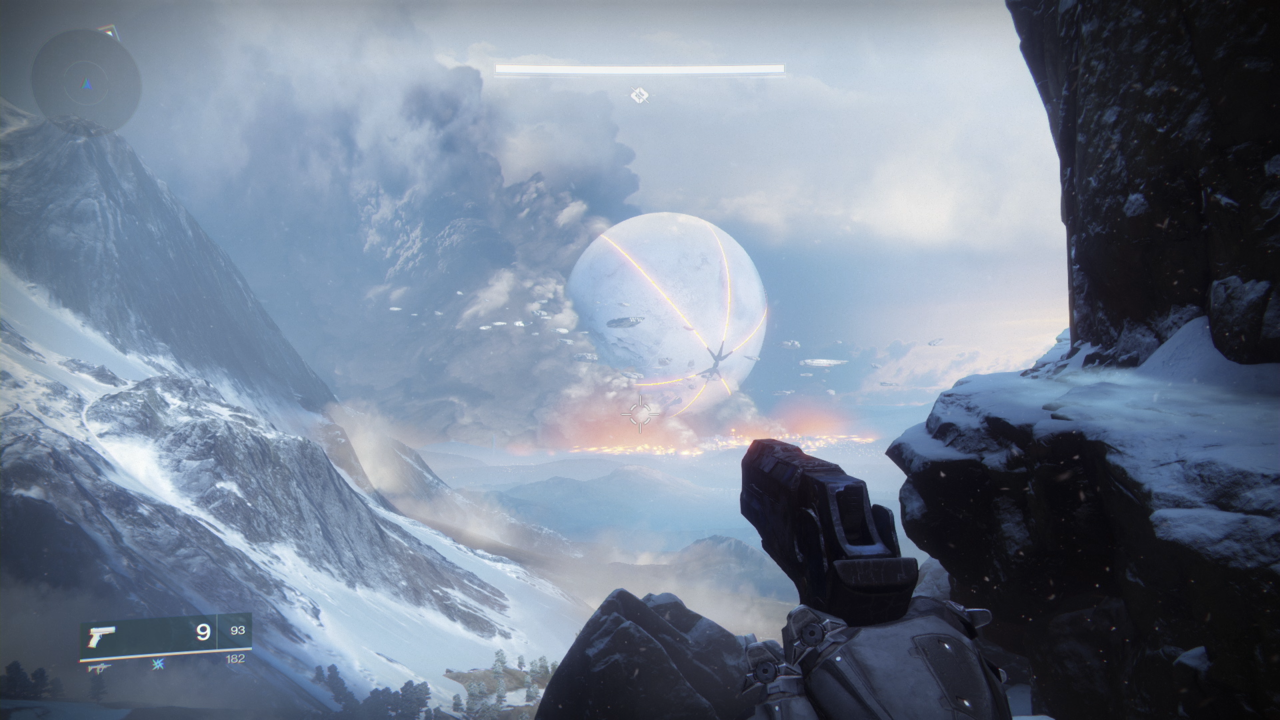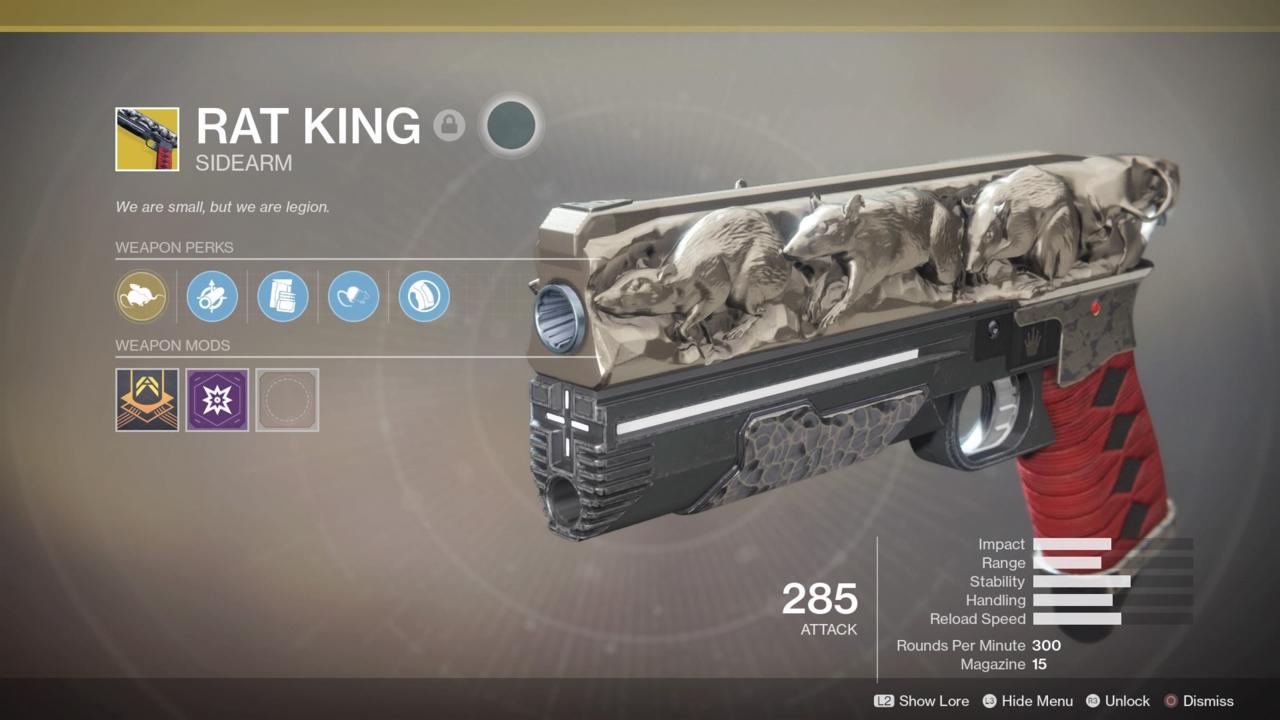Destiny 2 is a lot more Destiny. The structure is largely the same, as is the mechanically excellent shooting and satisfying loot grind. But there are a variety of changes both under the hood and throughout your activities that make it a significant improvement over the original and a better experience for more than just the most hardcore players.
From the onset, there's an overwhelming amount of stuff to do. The Red War story funnels you through the four areas you can explore, introducing you to each one as you go. At each destination, there's a bunch of optional activities to choose from, including story-like Adventure missions, simple loot dungeons called Lost Sectors that lead to hidden areas of the map, and public events and patrols, which return from Destiny 1. Then, as you progress through the story, you'll unlock the strike playlist and PvP in the Crucible. For a newcomer to Destiny, it can be hard to decide what to do and when.

The Red War story missions are less about plot and more about acclimating you to everything there is to see. You'll level up at a pretty steady pace, but there are two level-gated missions that essentially force you to complete Adventures and other activities for XP before you can move on. There's no actual reason for the missions to have level requirements, which can be annoying, but having direction is welcome after Destiny 1's lack thereof. And aside from netting you XP and loot, the semi-hidden Lost Sectors reward exploration while Adventures are filled with lore and interesting details about the world that fall outside of the scope of the main story. If you're burnt out on standard PvE, you can switch to PvP to level up, which requires different gear and skills.
The story is enough to serve its main purpose, which is to contextualize the shooting and looting you're doing through it all. Its villain is a derivative conqueror figure with a hunger for power and destruction, and the save-the-world plot is tired. But you don't need to know much to get going except that humanity is in danger, and you of all people have the power to help. The story's strengths lie in atmosphere and side details, like the endearing craziness of the deranged AI Failsafe or the mysteries of the Vex machine race, and that should be fine for the majority of players who see the story as something to rush through in order to reach the high-level "endgame." The mournful soundtrack in particular is fantastic, and it carried me through the most basic story beats, even on repeat playthroughs.
Like Destiny 1, there's a lot of grinding to be done between finishing the story and moving onto the high-level endgame activities like the Nightfall strike and the Raid. And again like in Destiny 1, the shoot-and-loot feedback loop feels fantastic. The gunplay is still excellent, and being rewarded for your efforts with an even better gun is something worth celebrating. The biggest change is how much quicker it is to increase your Light level--now called Power--with minimal grinding early on. The combat isn't any easier because of it, though, so it simply takes away the Destiny 1-era frustration of running the same few strikes a dozen times before you can move on to literally anything else. Plus, knowing you might get a slightly more fashionable pair of gauntlets from a five-minute public event gives you the kind of instant gratification that will sustain you through to the endgame.
There's a decent variety of weapons and gear to find, mostly in random drops. And once you know what gear is desirable, it becomes a fun metagame to hope you'll find it. A favorite around the GameSpot office has been the exotic auto rifle Sweet Business, and though no one has been using it, we had a lot of fun embarking on the quest to get Rat King. You might get lucky and get what you want right away, but for most people, finding a combination of great weapons for both PvE and PvP and gear with abilities that complement them takes some time. As far as customization goes, the Eververse and its microtransactions return, though leveling up after the official level cap grants you the new Bright Engrams that can be redeemed for consumable shaders, emotes, and more (for free). The change to shaders wasn't popular among fans at first, but making them consumable allows for a greater range of customization on different pieces of armor as well as weapons.

Some activities and areas are more cleanly or interestingly designed than others, and after a handful of hours, you'll start to identify the ones you love to play again and again and the ones you aren't as fond of. At least two of the Crucible maps are circular in design and essentially funnel you to your death if you aren't paying attention, which can get pretty boring; some areas require a fair amount of platforming, which can vary from tolerable to tedious depending on your class. But others are laid out in all the right ways to be memorable and fun to replay, like the Arms Dealer strike that keeps you running from room to room and preserving your heavy ammo for a series of tanks.
Though there's plenty you can do on your own, Destiny 2 is undeniably better as a shared experience. That can come on many different levels; you can work silently with complete strangers to trigger a heroic public event that gets you all better loot, and on the opposite end of the spectrum, you can coordinate with five friends for hours on end to tackle the Raid. You can also join a Clan, which can grant you a number of passive benefits, like legendary gear, as long as someone in your Clan is meeting certain milestones. On top of that, Destiny 2 also introduces Guided Games, where solo players can search for groups who are short one person and willing to help them through difficult endgame activities like the Nightfall or Raid.
Success through strong teamwork is absolutely the best part of Destiny 2.
Success through strong teamwork is absolutely the best part of Destiny, and the top-to-bottom tweaks and additions in Destiny 2 make it more accessible without dampening your sense of accomplishment. Meeting the level requirement for the Nightfall or Raid and actually completing it are two very different things, and getting in sync with your Fireteam and flawlessly executing a strategy takes a lot of work. The first two Nightfall strikes, for example, both introduced a modifier to the original strike that forces you and your team to coordinate loadouts and stay in constant communication about which weapons and subclasses you're using. You have to figure that out while also shooting waves of enemies and trying not to die. You'll most likely fail, but each failure helps you perfect your strategy incrementally, and the process of collectively achieving that goal is immensely satisfying.
At the highest level, the vast and visually striking Raid combines the need for top-tier weapons and gear, picking the correct subclass and loadout based on what your team needs, strong combat skills, and problem-solving as a group. Destiny 2's first Raid, Leviathan, is very, very difficult, and solving its often obscure puzzles can be both rewarding and frustrating. For the most part, each failure teaches you something new, and the GameSpot Raid team actually cheered when we came up with a solid strategy after going in blind. But there was one section in the middle that we struggled to complete even after we figured out what to do conceptually. Of course, this was after about five straight hours of raiding, so fatigue was definitely a factor--but it didn't blend the puzzle-solving part with actual execution as well as the previous sections of the Raid.
In true Destiny fashion, if you do something once, you'll probably end up doing it many more times. The difference with Destiny 2 is in the variety and accessibility of what's available, which cuts down on a lot of the frustration associated with grinding. And even after you've leveled up, there's still more you can do, from keeping up with daily and weekly challenges to just hanging out with friends. It's a much stronger foundation than the original had and one that's enough on its own to keep people coming back week after week.
Editor's note: Now that Destiny 2 is out on PC, we've put that version through its paces in both solo missions and competitive multiplayer matches. The PC version comes with the usual suite of graphic and control options, and ran smoothly on our test PC built around a GTX 1070. We've since updated the score to reflect our experience across all available platforms.


















